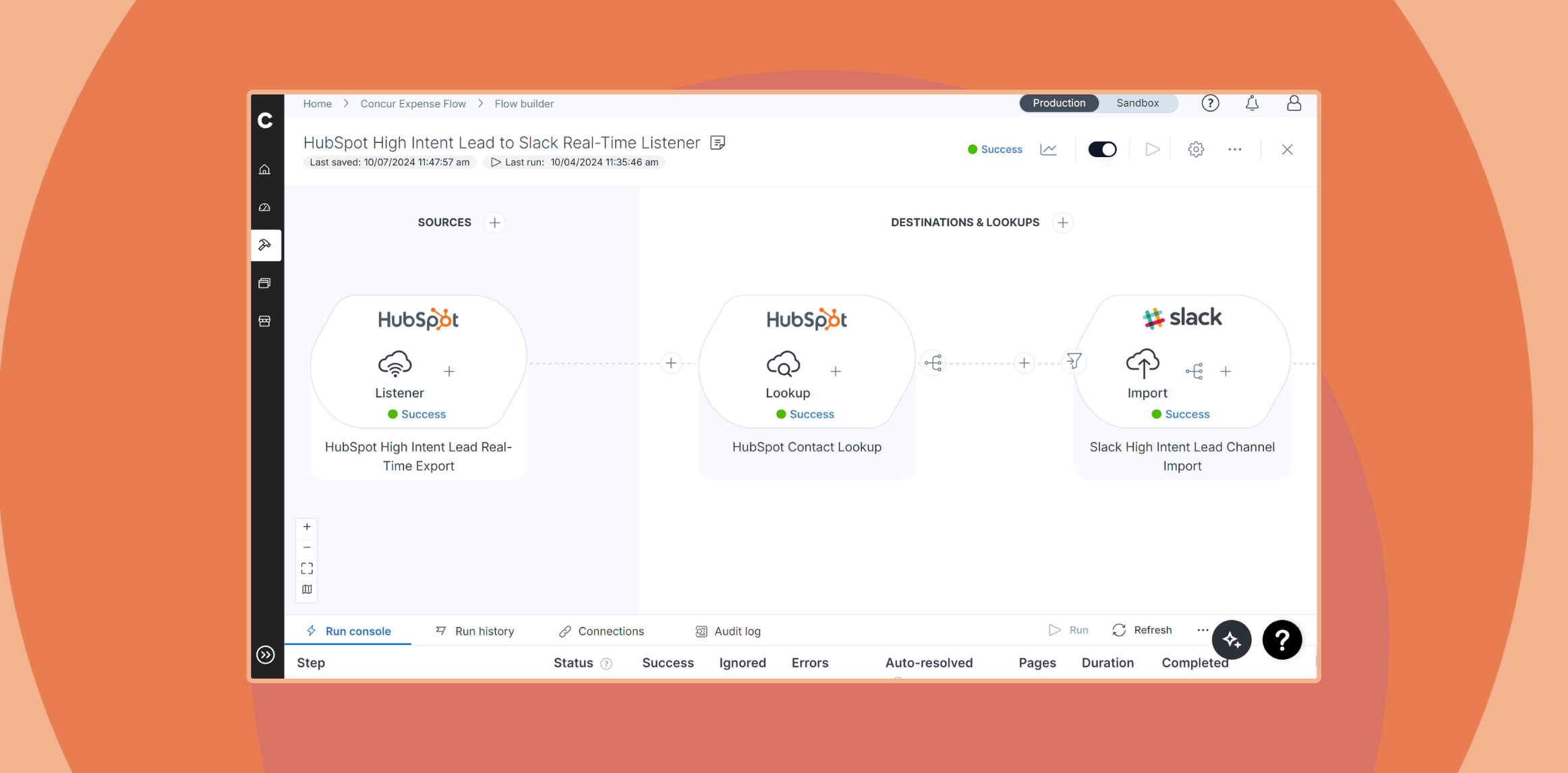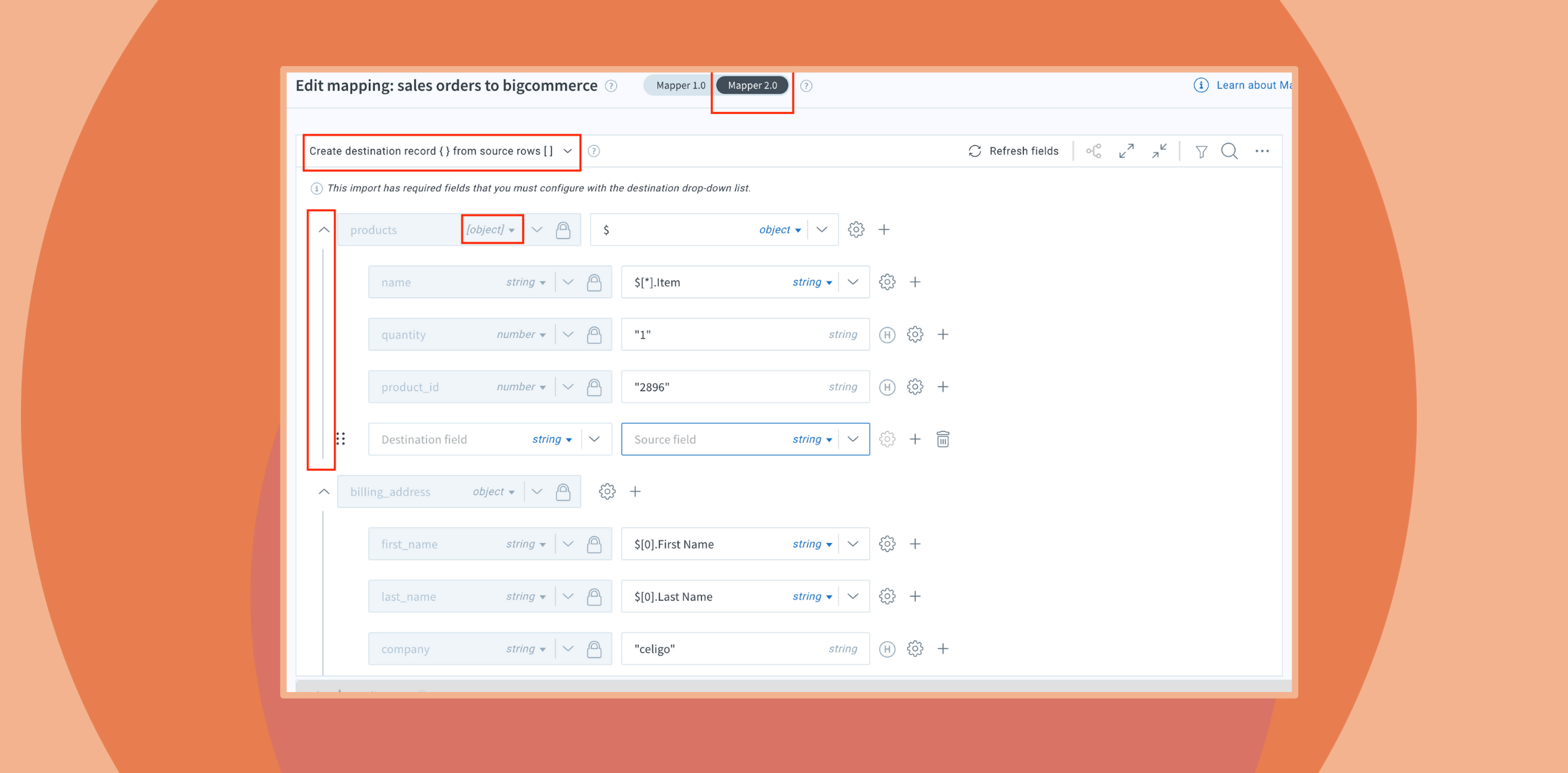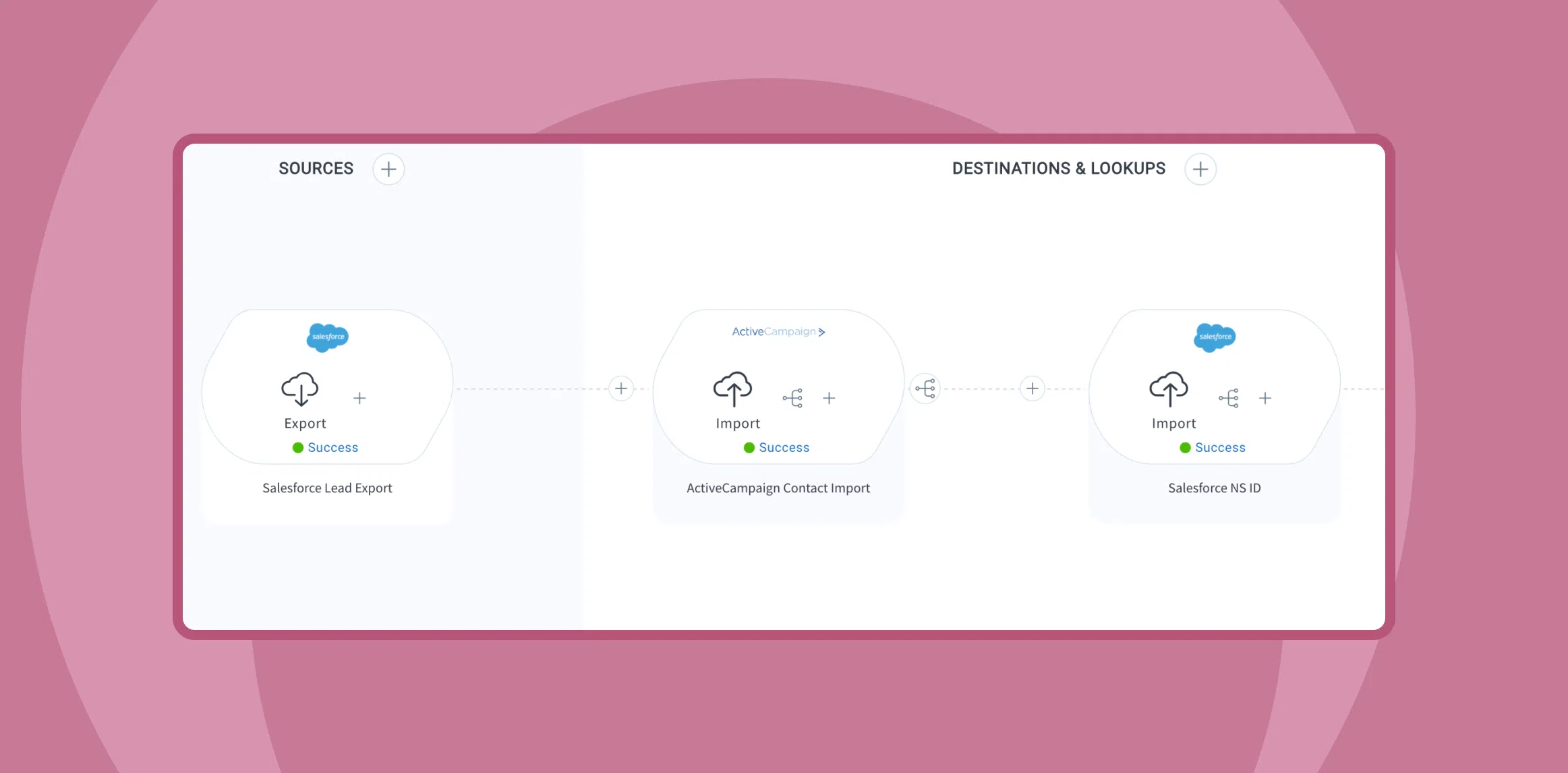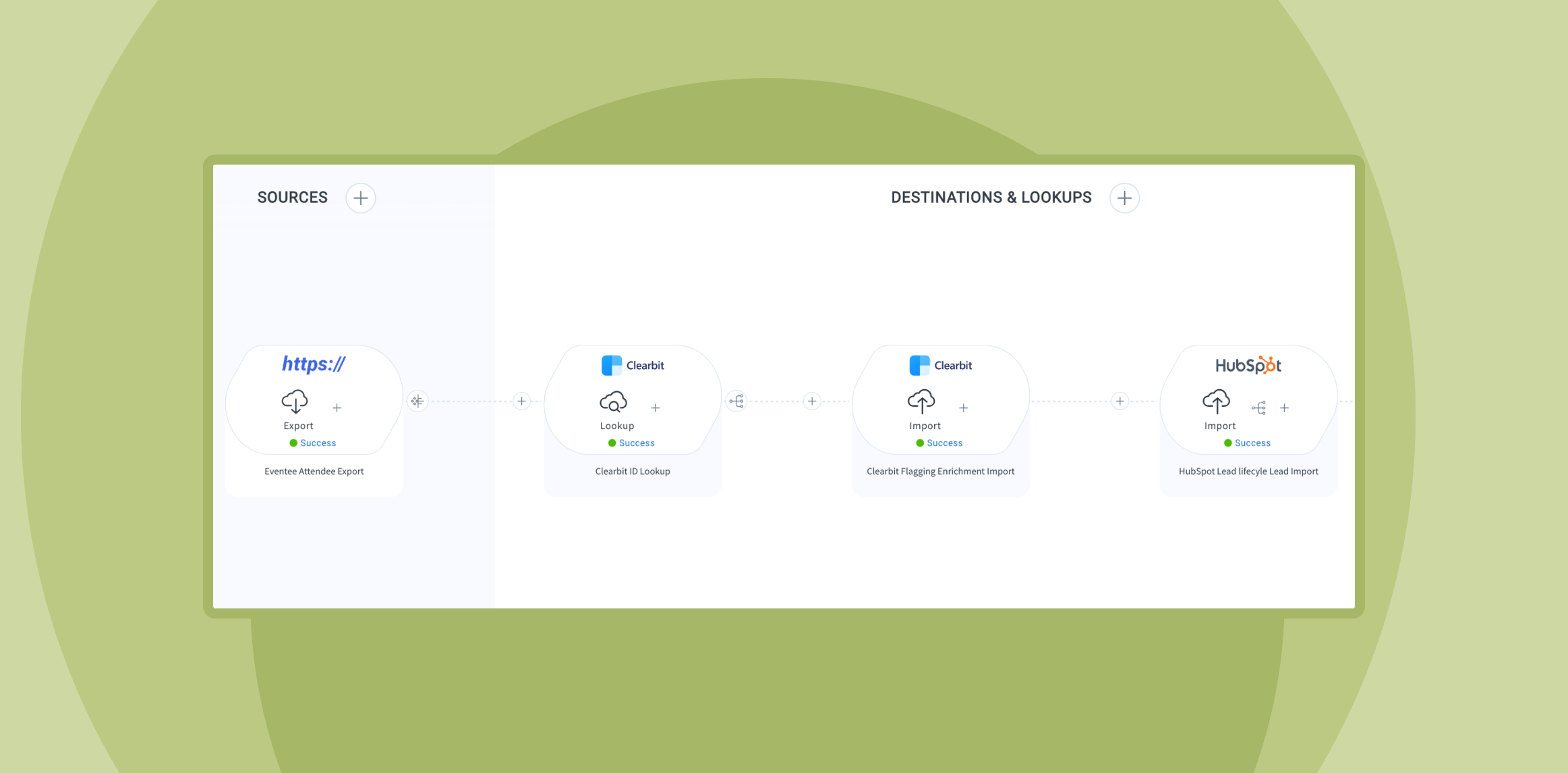Published Nov 20, 2024
Automate lead handoff in real-time using webhooks

Effectively coordinating lead handoff between marketing and sales departments can be the difference between a valuable business relationship and an opportunity that falls through the cracks. While a seamless process is ideal, finding the right strategy can be challenging.
Let’s imagine a use case where you, as a Celigo user, might identify the need for a flow that uses a webhook. Suppose your company primarily communicates via Slack and uses HubSpot for lead generation. For example, when prospects fill out a form monitored by marketing, team members may share that information in a Slack channel shared with sales.
However, errors can occur: data might be incorrectly entered, messages can get lost, or team members may forget to share updates.
As a Celigo administrator, you aim to find a reliable, immediate automation solution to this problem.
Webhooks demo
Real-time data transfer with Webhooks
Flows in Celigo’s iPaaS can be configured to run on a scheduled basis. Alternatively, flows can leverage webhooks in applications. Webhooks (aka “listeners”) can be triggers in your application environments. Rather than waiting for a specific time, they listen for particular events and send data out when those events occur.
Using a webhook flow in HubSpot, you can ensure real-time data transfer. When a prospect submits a form expressing interest in your business, a Contact is created.
This action triggers a webhook that sends data to integrator.io, which then relays the new Contact information to Slack.
The complete flow

The first step of this flow uses a webhook, indicated by its icon, the “Listener” label, and the absence of a scheduling icon in the top-right.
A webhook in HubSpot is configured to detect the creation of Contacts. A URL provided by integrator.io is supplied to this webhook in HubSpot to route the data to this flow. In this case, the completion of a form by a prospective customer triggers the execution of this flow.

When a prospect fills out this form expressing interest, the submission of this form creates a Contact in HubSpot, corresponding to Lead. This triggers the webhook in this flow and hands along basic information about the created record, including the record ID.
A lookup step uses that ID to look for that record in HubSpot and add more informative data to the flow, such as the name, email, address, etc. of the new Lead. The final step connects to Slack and posts the Lead’s information to the selected channel in your Slack environment. A filter ensures Slack messages are sent only for Leads created by that specific HubSpot form. Otherwise, this step is ignored.

In just a few steps, you can fully automate this process with a real-time, easily managed flow. While scheduled flows suit bulk data integrations, webhooks are ideal for immediate follow-up on time-sensitive events. Consider using webhooks when prompt action is essential.
Integration insights
Expand your knowledge on all things integration and automation. Discover expert guidance, tips, and best practices with these resources.




